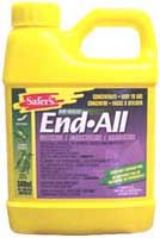Spider Mites

There are numerous kinds of mites, also known as spider mites, and many feed on plants. They congregate in dense colonies in webs on the undersides of leaves. Symptoms of their feeding show up as silvering or a stippled effect on the leaf top, but the precise symptom varies with the plant. Turn over affected leaves and you're likely to find spider mite webbing; if you rub the leaf it will feel gritty. Mites feed on many kinds of plants, edible and ornamental. Houseplants are a favorite target.
Control
Hot, dry, and dusty conditions encourage mites. Keep plants well watered and wash them off frequently. If you detect an infestation, first spray plants with a forceful stream of water to knock mites from the leaves. If the infestation persists, spray plants with insecticidal soap or horticultural oil, covering the undersides of leaves thoroughly. In orchards, buy and release predatory mites, and encourage any that are already present by not spraying insecticides.
Photography and info by the National Gardening Association
Control in Veg and EARLY Bud with Safers Endall 500ml concentrate

Safer's End-All Miticide & Insecticide will control all stages of aphids, spider mites, whitefly, and spittle bugs.
Safer's End-All is an easy-to-use, concentrated miticidal and insecticidal spray that kills eggs, nymphs and adults of aphids, spider mites and whitefly on contact. This 500mL concentrated formula makes 25L of spray.
Directions for use
Mix 20mL concentrate with 1 litre of water. Shake well before each use and stir or shake diluted spray frequently during use. Using hand-held trigger sprayers or backpack sprayers, a fine mist is recommended to provide thorough coverage for upper and lower leaf surfaces, as well as stems where needed. Avoid over-spraying foliage to runoff. Insects must be contacted by spray to be killed.
For CONTROL IN Late Bud. Use DOKTOR DOOM

Recommended for Organic Gardening
400 Gr. 0.2% Pyrethrins |